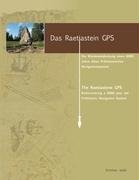<< Text Pages >> Grotte de la Source - Passage Grave in France in Provence:Bouches-du-Rhône (13)
Submitted by thecaptain on Tuesday, 07 June 2005 Page Views: 6489
Neolithic and Bronze AgeSite Name: Grotte de la Source Alternative Name: Hypogee De La SourceCountry: France Département: Provence:Bouches-du-Rhône (13) Type: Passage Grave
Nearest Town: Arles Nearest Village: Fontvieille
Latitude: 43.710500N Longitude: 4.683700E
Condition:
| 5 | Perfect |
| 4 | Almost Perfect |
| 3 | Reasonable but with some damage |
| 2 | Ruined but still recognisable as an ancient site |
| 1 | Pretty much destroyed, possibly visible as crop marks |
| 0 | No data. |
| -1 | Completely destroyed |
| 5 | Superb |
| 4 | Good |
| 3 | Ordinary |
| 2 | Not Good |
| 1 | Awful |
| 0 | No data. |
| 5 | Can be driven to, probably with disabled access |
| 4 | Short walk on a footpath |
| 3 | Requiring a bit more of a walk |
| 2 | A long walk |
| 1 | In the middle of nowhere, a nightmare to find |
| 0 | No data. |
| 5 | co-ordinates taken by GPS or official recorded co-ordinates |
| 4 | co-ordinates scaled from a detailed map |
| 3 | co-ordinates scaled from a bad map |
| 2 | co-ordinates of the nearest village |
| 1 | co-ordinates of the nearest town |
| 0 | no data |
Internal Links:
External Links:
Hypogeum of the Arles Fontvielle group, southwest of the village of Fontvielle on the D17, just to the south of the road in the land beside a restaurant.
The monument is on private property, not readily accessible to public. About 15 Meters long, within a circular barrow. Neolithic to Chalcolithic.
You may be viewing yesterday's version of this page. To see the most up to date information please register for a free account.
Do not use the above information on other web sites or publications without permission of the contributor.
Nearby Images from Flickr






The above images may not be of the site on this page, but were taken nearby. They are loaded from Flickr so please click on them for image credits.
Click here to see more info for this site
Nearby sites
Click here to view sites on an interactive map of the areaKey: Red: member's photo, Blue: 3rd party photo, Yellow: other image, Green: no photo - please go there and take one, Grey: site destroyed
Download sites to:
KML (Google Earth)
GPX (GPS waypoints)
CSV (Garmin/Navman)
CSV (Excel)
To unlock full downloads you need to sign up as a Contributory Member. Otherwise downloads are limited to 50 sites.
Turn off the page maps and other distractions
Nearby sites listing. In the following links * = Image available
162m SSE 153° Hypogée de Bonnias Passage Grave
633m WSW 258° Hypogee du Castelet* Passage Grave
639m SW 228° Dolmen de Saint-Contignarde Passage Grave
640m SW 228° Menhir de Saint-Contignarde Standing Stone (Menhir)
1.3km SW 215° Epée de Roland Menhir Standing Stone (Menhir)
1.3km SSW 210° La Grotte des Fées de Cordes* Passage Grave
1.5km SSW 212° Arnaud Hypogee Long Barrow
1.6km ESE 109° Mas Cadenet dolmen Passage Grave
2.6km ESE 117° Dolmen du Mas d'Agard Burial Chamber or Dolmen
3.1km ESE 105° Barbegal Mill and Aquaduct* Ancient Mine, Quarry or other Industry
4.1km ESE 103° Dolmen de la Mérindole Burial Chamber or Dolmen
9.1km NNE 14° Menhir Mourgue Standing Stone (Menhir)
9.6km ENE 68° La grotte de Costapera Cave or Rock Shelter
9.8km ENE 67° Les Baux* Ancient Village or Settlement
13.0km SE 128° Mas deu Moulin Artificial Mound
13.0km SE 128° Baume de Trou Cave or Rock Shelter
13.9km ENE 59° Glanum* Ancient Village or Settlement
14.1km NE 54° Grotte Baldouin Cave or Rock Shelter
14.2km NE 54° Grotte Romanin 1 Cave or Rock Shelter
14.2km NE 54° Grotte Romanin 2 Cave or Rock Shelter
14.2km NE 54° Grotte des Chats Cave or Rock Shelter
15.7km E 90° Oppidum des Caisses* Ancient Village or Settlement
21.1km E 91° Roucas de l'Eure Burial Chamber or Dolmen
22.1km ENE 75° Tombe Meynier Cave or Rock Shelter
23.4km NE 36° Les Tours Cave or Rock Shelter
View more nearby sites and additional images






 We would like to know more about this location. Please feel free to add a brief description and any relevant information in your own language.
We would like to know more about this location. Please feel free to add a brief description and any relevant information in your own language. Wir möchten mehr über diese Stätte erfahren. Bitte zögern Sie nicht, eine kurze Beschreibung und relevante Informationen in Deutsch hinzuzufügen.
Wir möchten mehr über diese Stätte erfahren. Bitte zögern Sie nicht, eine kurze Beschreibung und relevante Informationen in Deutsch hinzuzufügen. Nous aimerions en savoir encore un peu sur les lieux. S'il vous plaît n'hesitez pas à ajouter une courte description et tous les renseignements pertinents dans votre propre langue.
Nous aimerions en savoir encore un peu sur les lieux. S'il vous plaît n'hesitez pas à ajouter une courte description et tous les renseignements pertinents dans votre propre langue. Quisieramos informarnos un poco más de las lugares. No dude en añadir una breve descripción y otros datos relevantes en su propio idioma.
Quisieramos informarnos un poco más de las lugares. No dude en añadir una breve descripción y otros datos relevantes en su propio idioma.